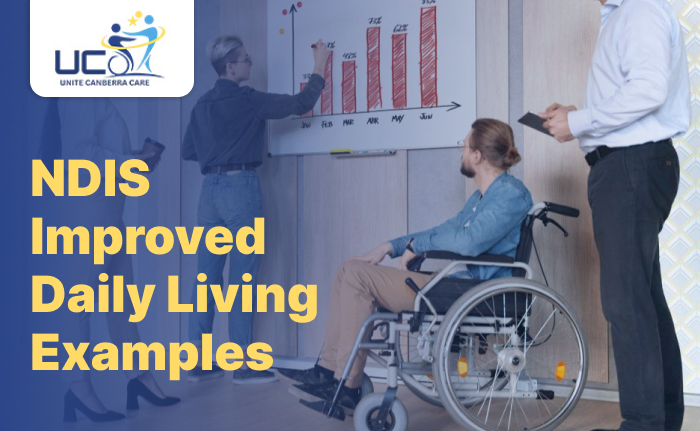

Surviving with a disability can present daily challenges. The National Disability Insurance Scheme gives support to the participants by providing the best freedom and boosts their quality of life. Improved Daily Living (IDL) is one of the most important categories related to the NDIS funding. The prime focus is in on building essential skills, developing confidence, and improving involvement in regular activities.
At Unite Canberra Care, we believe that knowing how IDL works, along with practical examples, is key. It can turn it simpler for the participants and families to see the real benefits.
Here, we’ll explain what NDIS Improved Daily Living is, why it issues, and share real-world examples of how it assists individuals to live more separately and with self-respect.
NDIS Improved Daily Living moves under the Capacity Building Supports group. Different from the prime supports that cover basic daily requirements, IDL is specifically planned to boost a participant’s abilities through skill growth and therapy. The aim is not simply to find short-term support but to form long-term autonomy and self-sufficiency.
Getting funding for Improved Daily Living can be used for a broad range of services offered by professionals, such as:
The category is necessary as it goes beyond meeting the instant requirement. It assists participants:
Really, better Improved Daily Living allows the individual to enjoy more autonomy and reduce reliance on steady external support.
To know its real impact, here are some sensible examples of how participants can use IDL funding:
An occupational therapist may right work with an applicant to teach them
Speech therapy sessions can assist participants who struggle with speech precision or language comprehension. Take an example, a child with autism may get the therapy to get better verbal communication, while an adult who faced a stroke may study strategies to speak and state themselves confidently.
Financial literacy is an essential skill. Trainers can support the participants in learning how to handle money, pay bills, and create a right budget. They make sure that they are less weak and more autonomous in handling their personal finances.
Through social skills training, taking participants can learn how to act together efficiently in community setups. This might comprise practicing conversation skills, role-playing social situations, or building confidence to link to community events.
Physiotherapists can design work out programs to get better mobility, balance, and strength. Take for example. A contributor recovering from a wound might work on walking securely or using mobility aids effectively.
Counselling and even psychology services funded under IDL can support participants expand coping strategies. It can handle anxiety or depression and build flexibility to face daily challenges.
A support worker or trainer can teach a member how to read timetables, buy tickets, and travel separately on buses or trains. This skill significantly expands opportunities for social and community commitment.
From cleaning and laundry to organising personal spaces, take participants may get support to learn household management skills, turning them quite capable of living independently.
Real-Life Scenario
Take the example of Sarah, a 25-year-old NDIS member suffering from cerebral palsy. With Improved Daily Living supports:
NDIS Improved Daily Living is more than just a funding group. It’s a pathway to greater independence, pride, and confidence for people suffering from any sort of disability.